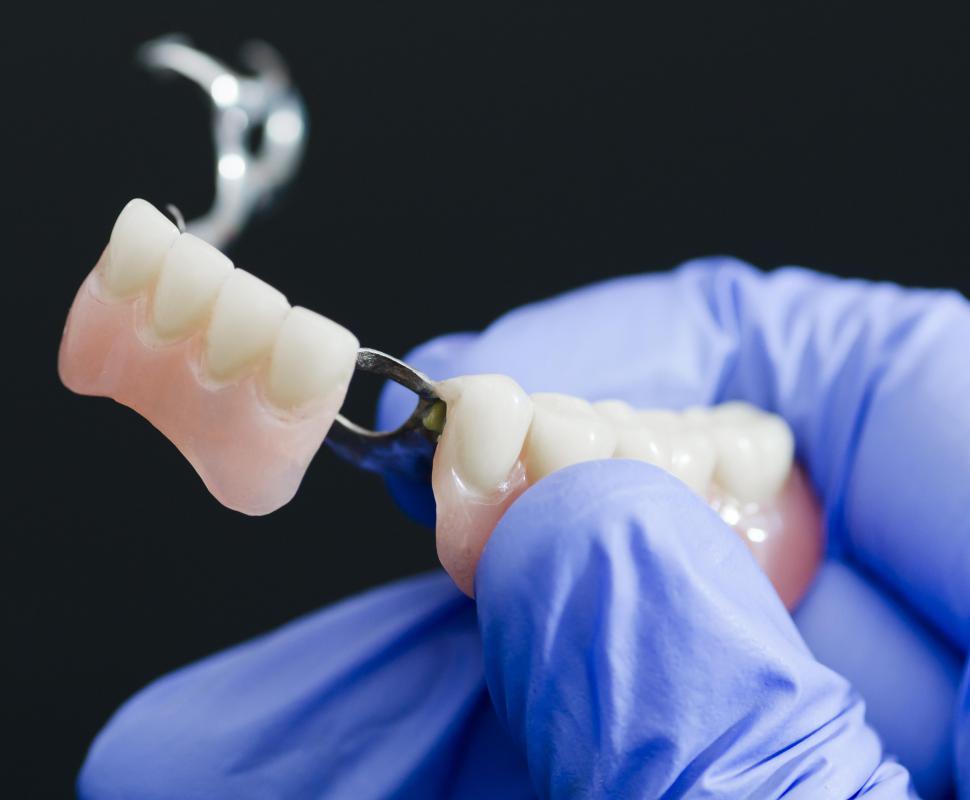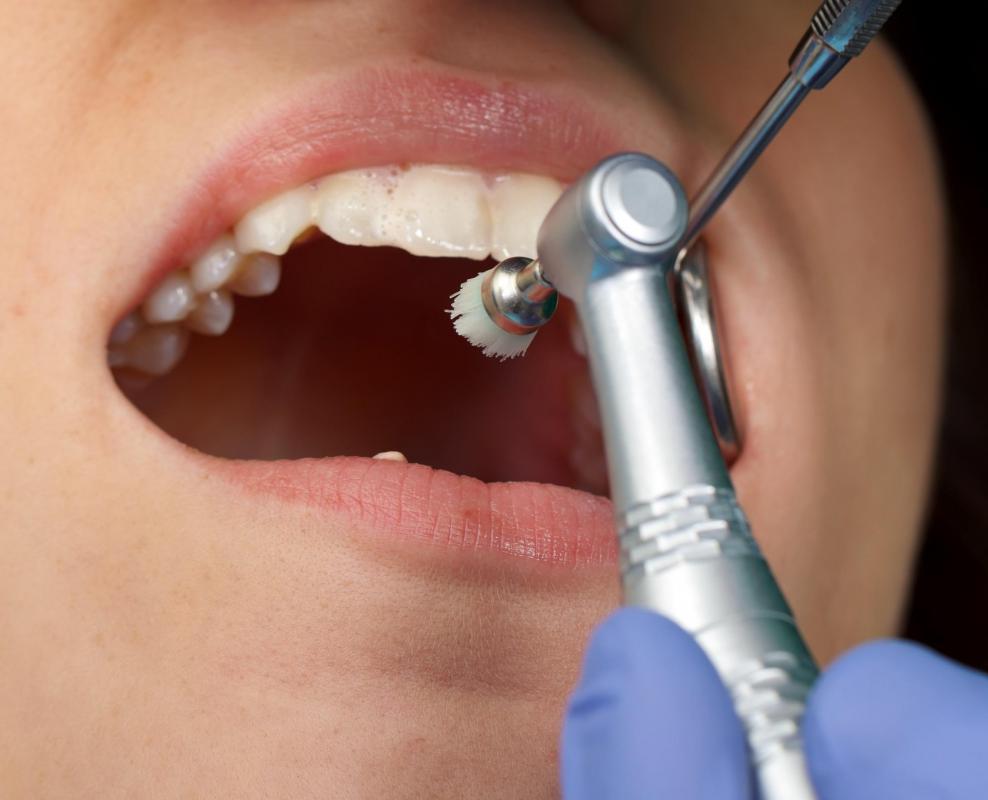At WiseGEEK, we're committed to delivering accurate, trustworthy information. Our expert-authored content is rigorously fact-checked and sourced from credible authorities. Discover how we uphold the highest standards in providing you with reliable knowledge.
What Are the Treatments for Enamel Hypoplasia?
Treating enamel hypoplasia depends on the location and severity of the condition. Enamel hypoplasia is a condition where enamel does not properly form on a developing child's teeth. Not treating the condition can have negative lifelong consequences. For mild cases, covering the tooth with artificial enamel can act as a permanent solution. For teeth that lack most of their enamel, artificial enamel may not bind properly; metal crowns and artificial teeth become necessary in these extreme cases.
Tooth enamel is the hardest substance in the human body. It exists to protect the teeth from both the physical forces involved in eating and the bacteria present in the mouth. Enamel normally forms as one's permanent teeth develop below the gum line; the combination of certain minerals create the enamel layer. Many factors can cause this process to malfunction: malnutrition, lack of vitamin D, and genetics. The condition presents as discolored teeth.

If left untreated, enamel hypoplasia can have serious lifelong consequences. Teeth lacking enamel are vulnerable to cavity-forming bacteria. Cavities, gingivitis and periodontal disease are all possibilities. For a patient with enamel hypoplasia, these conditions can be chronic during adulthood. If treatment begins when a dentist diagnoses the condition, these problems can be avoided.

Enamel hypoplasia treatment is always individualized. Treatment options depend on the hypoplasia's location and severity. For teeth with limited hypoplasia, bonding them with a composite material is the most common treatment. This synthetic enamel covers bare spots, protecting the tooth against bacteria. After the material dries, a dentist sculpts it so that the tooth has a normal cosmetic appearance.

Serious hypoplasia complicates one's treatment options. If the amount of natural enamel is too low, the composite material does not have a natural bonding area. In these situations, a patient has two options. The first is to cover the tooth with a metal crown. The second is to remove the tooth and later replace it with an implant or bridge.
The location of the hypoplasia also affects treatment options. If one presents with hypoplasia in the molars or other back teeth, a dentist will likely recommend a metal crown, as it will not be visible when a patient speaks, smiles or eats. On the other hand, a dentist will recommend natural looking implants or bridges if replacing front teeth becomes necessary. Considering one's finances, it may be necessary to replace a front tooth with a metal crown. It is possible to replace a crown with an implant or bridge later on if a patient desires a more natural-looking appearance.
AS FEATURED ON:
AS FEATURED ON:
















Discussion Comments
@ddljohn-- A veneer treatment is when natural teeth are restored or their appearance changed by applying porcelain teeth on top of real teeth.
If hypoplasia is extensive, veneer might be required. But don't worry, lots of people get this treatment now. The only difficulty with it is that it will have to be replaced every now and then in children since they are still growing and their jaw and teeth structure will change over time.
But veneers do treat enamel hypoplasia well. It will protect natural teeth from being damaged.
My nephew has this and my sister said that he will need to get dental veneers. I guess his is very bad because they said it's too late for the synthetic enamel.
Does anyone know about veneer treatment for enamel hypoplasia? What's that like?
My daughter was born premature and had several teeth with enamel hypoplasia. She had sealant treatment done where they seal the areas without enamel with synthetic sealant.
The treatment was actually much easier than I expected and there is no pain involved. My daughter didn't even get irritated during the process. I did get irritated however when I saw the dentist bill afterward. I don't know why dental enamel hypoplasia treatment is so expensive.
Post your comments